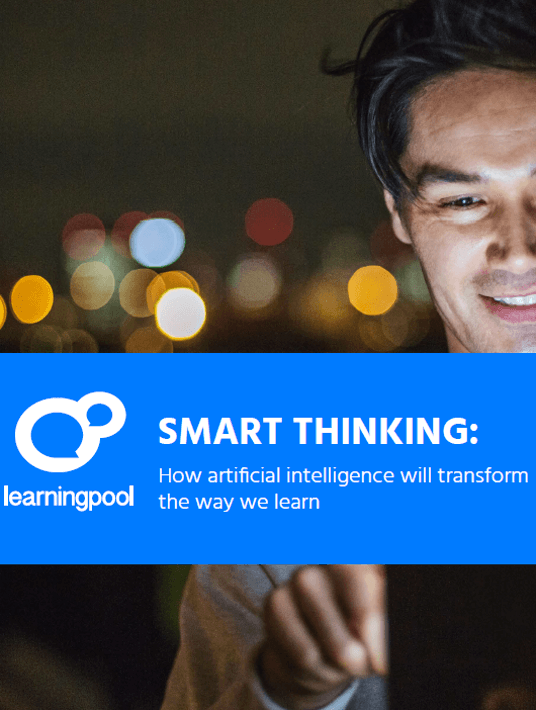The Modern Workplace: How We Work And Learn Today
Google something or someone and there’s a good chance the top result will be a Wikipedia entry. That’s not necessarily surprising, as we’ve always turned to reference books and encyclopedias for the facts.

But Wikipedia is different, not just because it’s online, but because it’s a collaborative exercise. Its entries are written, edited, and updated or rewritten all the time. And this vast online resource is not just the preserve of world-renowned experts, but the common preserve of a community of internet users. It’s still authoritative, but it’s democratic.
As we exercise our freedom to engage, one big question remains: what do we want from all this information and online activity? Naturally we want answers (otherwise why pose the question?). However, the kind of answers we want and the format we want them in are also relevant. In fact, we want very specific information as and when we need it.
A question pops into our head, out comes the mobile phone and we’re straight onto Google. We get the response in an instant. It’s becoming an automatic reflex.
Albert Einstein said he never remembered what he could look up and, in that sense, we’ve all become a little like Einstein. The power of digital technology allows us access, wherever we are, to more knowledge than most of us know what to do with. We graze information: picking it up, using it, and often discard it. And that, as a situation, has serious challenges and opportunities for work and training.
Social Is The Solution
Our use of technology reflects our highly social nature. We want to communicate and engage in dialogue. If knowledge is power, its growing availability means that power is distributed more widely. Remember Google’s mission statement about making the world’s information ‘universally accessible’.
Well, it’s not just access to information we seek, it’s advice too – even friendship. One of the most interesting applications of AI (Artificial Intelligence) is happening in China, where a Microsoft bot called Xiaoice has become a companion to millions of regular users.
So, it’s not just the immediacy of the response that causes us to use technology to pose our questions, it’s also a sense of belonging, of wanting to share, of being part of a conversation. And that doesn’t just apply to our private lives, but spills over into other areas of activity, including work.
The concept of an online, connected user doesn’t just exist in the social sphere.
It’s having real impact in the modern workplace, where most organizations rely heavily on digital technology. The prevalence of this technology affects the way we access and share information at work, and, critically, how we work.
In a purely practical sense, connectivity allows organizations to work together (internally and externally) even when they are dispersed over the globe. Salespeople on the move are continually in touch with their headquarters through mobile technology.
The employees of multinationals, stationed worldwide, are in constant contact through online connectivity, whether it’s through a PC at the desk, a laptop in a café, or a mobile phone on a train.
Give Me The Facts
One of the principal concerns about the modern workplace is that it doesn’t have a set geographical location: it’s everywhere. Depending on your view, this as liberating you from the desk or chaining you to your phone or tablet.
What’s not in doubt is how effective technology has been in connecting workforces and organizations and that has ramifications for the way we work.
A networked and distributed workforce challenges traditional work organization. Increased access to technology allows for, even demands, a flatter structure that encourages and enables more responsibility, independence, and opportunity for individual employees. No-one is shut out and everyone has the tools to contribute.
Technology offers huge potential for collaboration and, just like Wikipedia, allows the opportunity for knowledge to be discovered, recovered, and shared. There’s always the risk that when an experienced employee leaves an organization, specialist knowledge goes out of the door too. In the connected workplace that needn’t, and shouldn’t, be the case.
But if the modern workplace and the technology that supports it give employees greater opportunity, flexibility, and independence, how do you prepare them for it?
Traditionally, you would look to train people for a job and then give them a probationary period where they would gain work experience. This tried and trusted orderly approach seems somehow out of touch with the disruptive and constantly-evolving, fast-paced environment many workers find themselves in today. And, in any event, how do you train someone for something that hasn’t yet happened?
Final Word
At this point, our social and work lives interconnect. What’s the modern worker likely to do when faced with a need to find out something fast? Google it, of course. And Google will respond. But from an organization's and an employee’s point of view, any or many answers may pose a problem. What they need is an answer or solution that’s correct but nuanced – one that takes into account the circumstances, the context, and the culture in which that solution will be deployed.
Access to information is the starting point, but the true benefit is in its application. Here we see an opportunity for workplace training. What if you could train your workplace with the speed and efficiency of a Google search? What if you could have training at your desk, in the café, on the train, activated and accessed when your employees need it.
We call this approach to learning and training ‘resources, not courses’ and believe the answer to this lies in AI-enhanced performance support. If you want to learn more about this, download the eBook Smart Thinking: How Artificial Intelligence Will Transform The Way We Learn.









